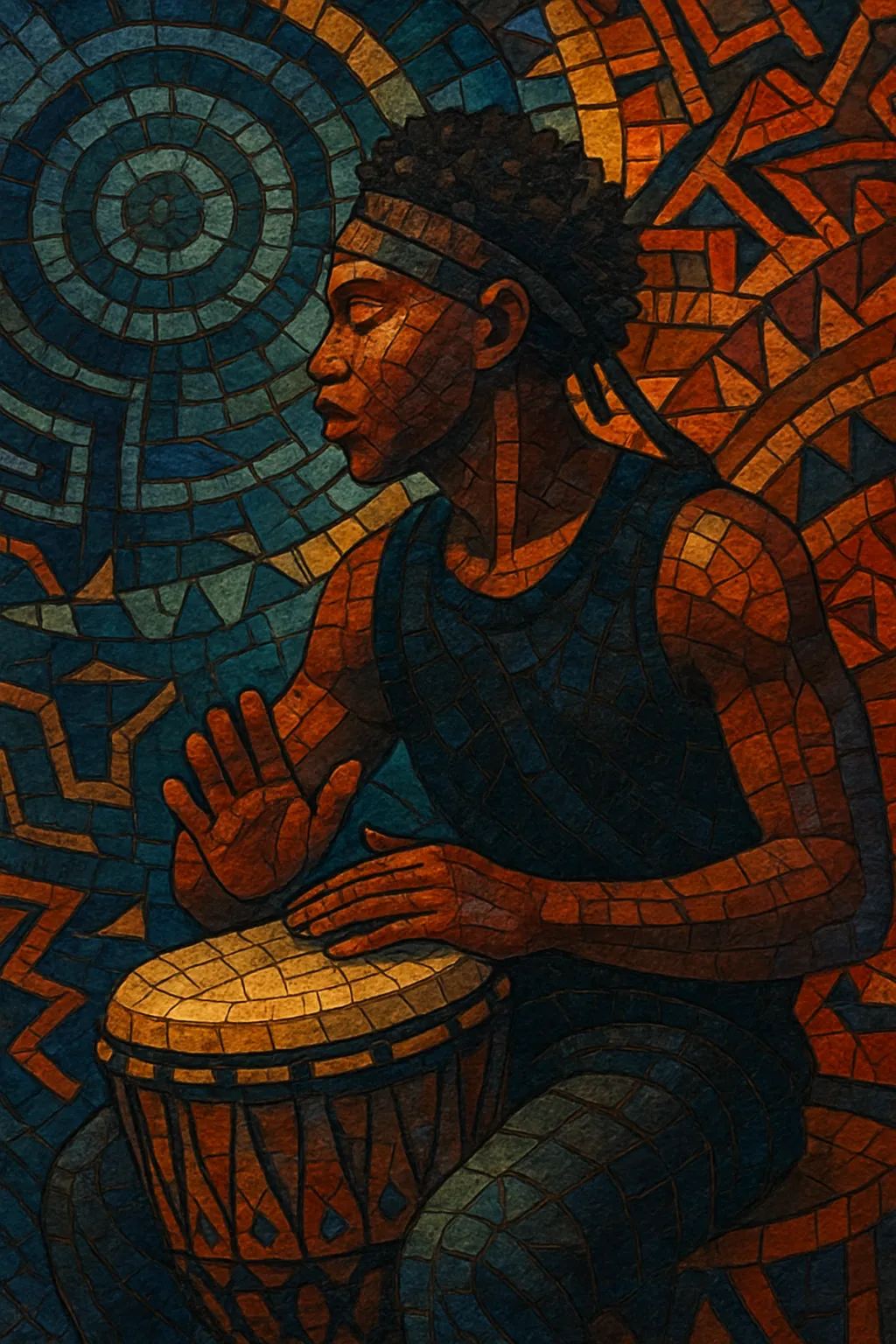Afro tech is a club-focused hybrid of Afro house and techno that blends four-on-the-floor drum programming with African polyrhythms, deep sub-bass, and hypnotic, minor-key synth work.
It favors driving grooves, atmospheric pads, chant-like vocals, and long, DJ-friendly arrangements that build patiently toward cathartic drops.
Compared with soulful Afro house, Afro tech tends to be darker, more streamlined, and more mechanical, while retaining the swing, percussion density, and call-and-response sensibilities of Southern African dance music.
Afro tech took shape in South Africa as producers steeped in Afro house and kwaito began adopting the tighter drum programming, synth sound design, and tension-release structures of techno and tech house. The result was a sound that preserved African rhythmic identity—hand percussion, off-beat shakers, tom runs, and polyrhythms—inside a darker, more minimal, and hypnotic club framework.
DJs and producers such as Shimza, Da Capo, Culoe De Song, Enoo Napa, Caiiro, and THEMBA helped codify the palette: 120–125 BPM four-on-the-floor, rolling subs, minor-mode arpeggios, metallic stabs, and sparse, mantra-like vocal hooks. Events and platforms in South Africa increasingly used the term “Afro Tech/Afrotech,” while international labels and stores grouped the style alongside Afro house, helping define its distinct, tech-leaning edge.
South African artists carried the sound to global stages, festivals, and Boiler Room-type platforms, while key labels and curators (e.g., MoBlack and SA-centric showcases and imprints) amplified the style. The genre resonated with techno and melodic house audiences who sought percussive drive with emotional, atmospheric tension. International collaborators and remix culture further spread Afro tech’s motifs—chant snippets, drones, and tightly side-chained percussion—into wider club circuits.
Afro tech stands as a core pillar of contemporary African electronic music: exportable, festival-ready, and deeply rooted in African rhythm and phrasing. It continues to cross-pollinate with melodic techno and progressive house while remaining grounded in the groove-first ethos of South African dance floors.


